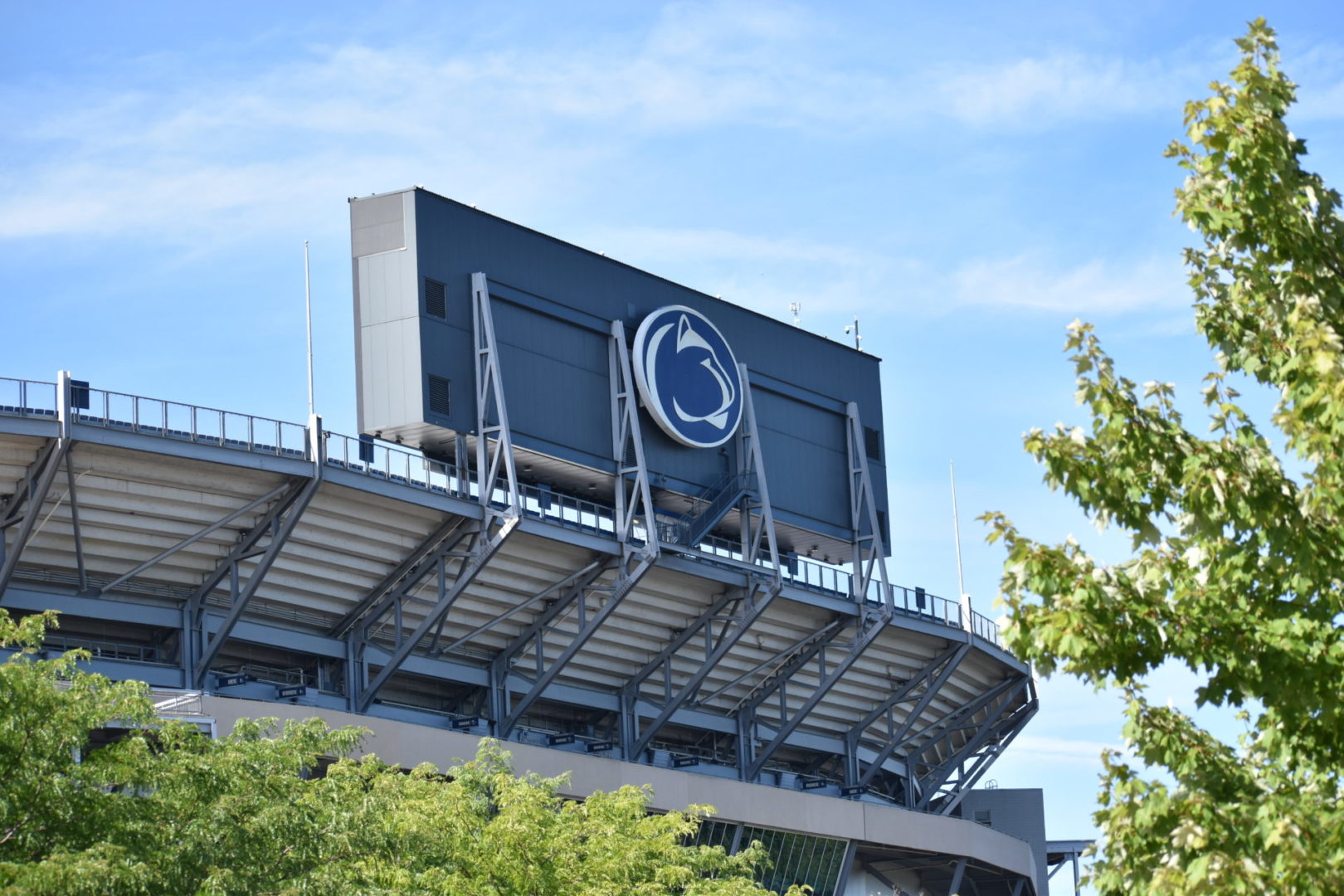Well, the euphoria certainly lasts a couple days when it’s a holiday weekend doesn’t it? When you are a sleepy little hamlet of around 50,000 permanent residents, and also home to the second-largest football stadium in the country – which 110,000 people filled on Saturday night to watch Penn State get all-time win No. 49 against West Virginia University – the feeling of excitement sticks around town.
Granted, WVU is an opponent Penn State has only lost to twice since 1956, and hasn’t played since 1992, but they were a Big 12 team with nothing to lose. So, a win against the Mountaineers feels like a real win, and we fans are happy.
Add in the upcoming home football game this weekend against Delaware – a D1 FCS foe that Penn State has never played and should easily defeat – and we have more reason to let the joy of beating WVU hang around a little longer. No offense to Delaware, but the most frightening thing for Penn State fans this weekend will probably be the Blue Hens’ helmets, which look almost identical to and could be mistaken for the despised Michigan Wolverines.
But amongst all the happiness of this past weekend, which included beautiful weather, a night game that allowed plenty of time for tailgating and an estimated 4 million-plus people watching the game on television, there was one dark cloud of drama that hung over the proceedings. And I’m not talking about the food choices in the upper deck of the north end zone – what, no chicken tenders or French fries!? And those Buffalo chicken sandwiches that apparently replaced the chicken tenders were cold as well as horrible!
No, I’m talking about academics.
It only took a short time after we started tailgating for the elephant in the room to make an appearance. Dave and Andy, two of my old dorm buddies – fourth floor Beam Hall to be exact – and I were tailgating and chatting about all the usual pre-game topics. And Andy broke the ice. “How the heck is the football team last in the Big Ten in APR?”
If you’ve been living under a rock, or just don’t care about Penn State football (nothing wrong with that!), you probably don’t know what that means. But for everyone else, less than two weeks ago on this website there appeared a story which pointed out that the Penn State football team’s “Academic Progress Rate” (APR) last year was at its lowest point in more than a decade, and placed dead last of all Big Ten football teams.
Now, I admit to being a comfortably middle-aged Penn State fan, and am aware that times change. I grew up when the mantra of Penn State football, as we fans understood it, was that academics are important. That going to class and getting a good education is a main part of the college experience. As old-school as that may seem, it is something that most of my PSU fan-peers have and continue to hold dear to their fanhood. We have a belief that at Penn State the word student-athlete means they’re students first and athletes second.
Being the parent of a college football player the last four years, I’ve been initiated into the periphery of this wild business that takes place live in front of millions of people all over the country in the fall, and tens of millions more on television.
So, as the somewhat expert in things college-football-ish in our little tailgate group, I felt the need to point out that the NCAA’s Academic Progress Rate is a misleading name. It’s about retention and only partly about academics. According to the NCAA, the APR “holds institutions accountable for the academic progress of their student-athletes through a team-based metric that accounts for the eligibility and retention of each student-athlete for each academic term.”
I’ve highlighted the word “and retention” above because the NCAA has equated retention of student-athletes as being indicative of their academic progress. Which is not the case. On a football team like Penn State’s with 85 scholarship players, it’s possible for 12 guys to transfer out while academically eligible, the remaining 73 guys to be academically eligible, and the team end up with an APR score of 929. Which is below the four-year average mark of 930 that the NCAA sets to be allowed to compete for championships. Yet there was no issue academically! (Penn State’s 21-22 APR was 914 but its four-year average was 958. The 2022-23 APR scores will be released in October.)
To put that in perspective, if 12 academically-eligible scholarship players transfer off a team of 85 guys, that’s a one-year transfer rate of 14%. The available data suggests one-third of all college students transfer at some time during their college years. In other words, if college football players were to transfer at rates similar to the average college student, none of their teams would be eligible to play for championships. Even if their academics were fine.
The point is that the NCAA has created a metric and described it as an “academic” measurement, even though it’s possible to fall short of the metric while doing everything right academically. Imagine trying to explain this in a Beaver Stadium parking lot while tailgating.
So, the question is, should we even care about this metric if it doesn’t measure what we believe it measures? Unfortunately, we don’t have that choice. The NCAA is the ultimate decider here, and keeps using and promoting these numbers. In which case, maybe the real pressure needs to be on the NCAA to get rid of this metric. Or rename it the “Retention Rate.”
Both are more work for Neeli and Pat. But if we want to continue having these euphoric feelings as the football team continues to pile up the wins, without the nagging doubt of whether the means are justifying the ends, something needs to be done. Because we know academics aren’t the issue.



